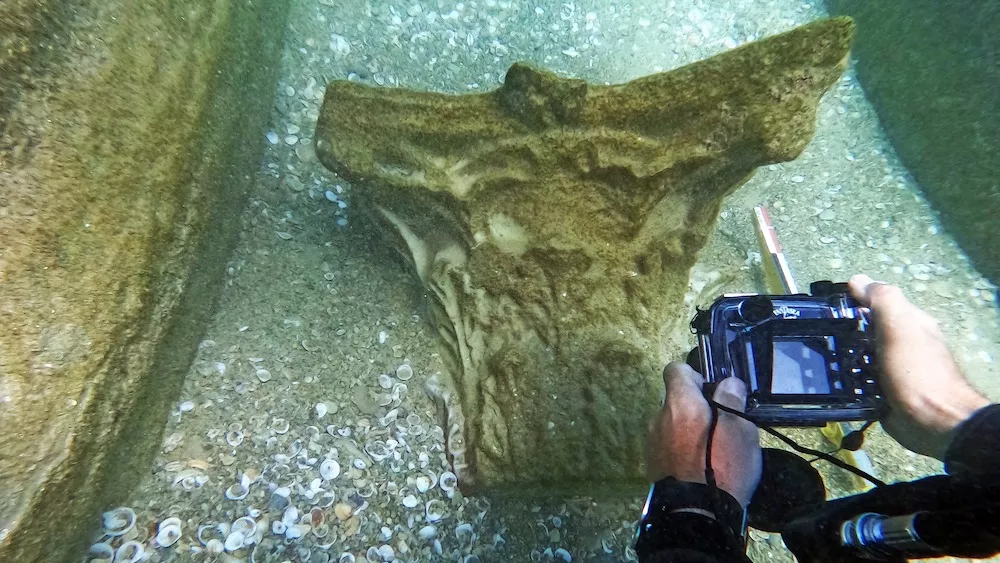An ancient wreck containing 44 tons of ancient Roman columns has been discovered off the northern Israeli coast by a local swimmer, resulting in great excitement among archaeologists.

This remarkable find has resolved a longstanding archaeological debate while shedding light on the ancient architectural practices of the time.
According to experts, the fine marble artifacts found within the wreck were likely intended for use in large-scale, grand public buildings, such as temples or theatres.
The discovery of these characteristic pieces has brought joy to archaeologists who have long studied and admired such structures.
 One of the Roman marble columns found. (Image credit: Israel Antiquities Authority)
One of the Roman marble columns found. (Image credit: Israel Antiquities Authority)
Dating back almost 1800 years to the Roman period, it is believed that the cargo originated from regions like the Aegean, the Black Sea, Turkey, or Greece.
The destination for these architectural elements was probably one of the ports along the southern Levant coast, such as Ashkelon, Gaza, or possibly Alexandria in Egypt.
Archaeological Excitement
While it was common during the Roman period for similar architectural objects to be made from local stone and then covered in white plaster, the underwater findings have confirmed that these treasures are indeed made of genuine marble, adding to their historical significance.
Furthermore, the discovery has settled a debate among archaeologists regarding the finishing of Roman period architectural elements.
The question was whether these elements were fully completed at the quarry site or fashioned into their final form at the construction site.
The presence of unfinished columns in the wreck, which were likely intended for the southern Levant, suggests that local artisans would have been available at the destination to complete the construction process.
A Lucky Find
 One of the upright Corinthian columns (Photo Israel Antiquities Authority)
One of the upright Corinthian columns (Photo Israel Antiquities Authority)
The immense weight of the Roman columns and the use of genuine marble further emphasise the grandeur and craftsmanship that were invested in the construction of public buildings during that era.
This discovery serves as a testament to the enduring fascination and cultural richness of ancient civilizations, leaving researchers eager to uncover more secrets hidden beneath the depths of the seas.





